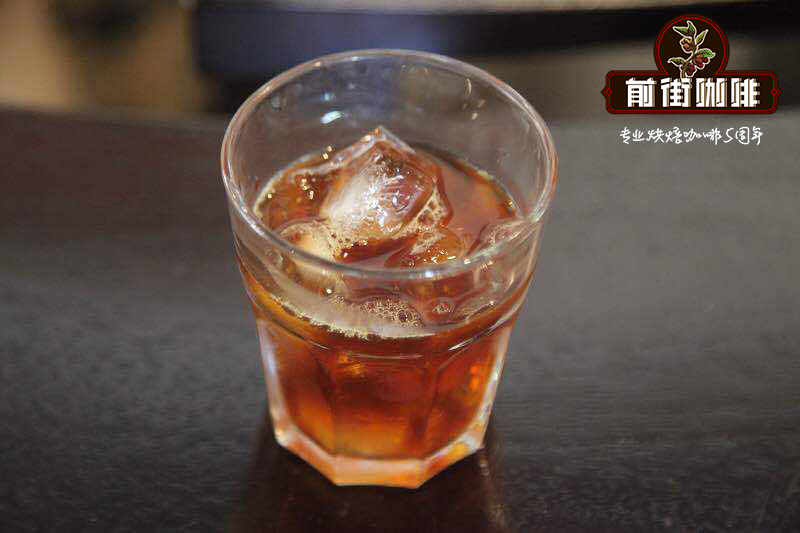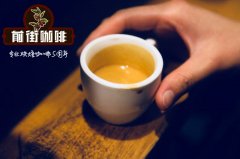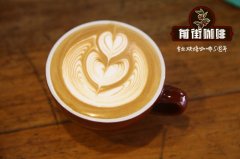What is the difference between espresso and coffee? what does espresso mean?

Professional coffee knowledge exchange more coffee bean information please follow the coffee workshop (Wechat official account cafe_style)
Coffee beans, coffee machines and cafes have become the three primary colors in coffee culture. Therefore, as a link in the whole coffee culture chain, Italy's most outstanding contribution is tantamount to the invention and improvement of the espresso machine.
The more recognized inventor of steam-pressurized espresso technology was Luigi Bezerra, followed by Milan dental goods manufacturer Pino Riservato to introduce and produce such machines. And the famous Illy coffee family 1935 invented the first modern coffee machine "Illyta", is an improved version, the original steam pressure has been replaced by compressed air, and this change established the embryonic form of modern automatic Espresso machine. So today, when we talk about Italian coffee, or use words like espresso, it is the espresso made from this "glittering behemoth made of chromium alloy". Its speed and foggy production process immediately won the love of the European people.
Espresso is derived from the past participle of the Italian esprimere, meaning "compressed essence", but there are always people who accidentally make a "Expresso" in the process of letter spelling-some linguists do think that the etymology of the word is French "exprits", which means "quick". Interestingly this popular misunderstanding largely recreates the two most striking features that made Espresso famous at that time.
In China, the capitalized Espresso is generally translated as "Italian espresso" because of the natural characteristics of a perfectly made Espresso: the brown-red fat foam (crema) floats thickly on the surface of the golden coffee, showing dark brown spots and emitting a strong aroma unique to fresh cooking, while this mellow, but also stubbornly remains in the empty 25ml cup after drinking, lingering for a long time. As a result, some people then poured whisky of one color into it and reviewed "Wine and Coffee" as a classic.
In order to complete a cup of qualified or even excellent Espresso, it also includes a lot of knowledge other than machines. To judge whether a cup of Espresso is qualified or not, it is necessary to start with coffee beans, roasting, blending and grinding of coffee beans, as well as fresh-keeping, until the coffee cup is thin and thick after brewing. When the whole process is done in one fell swoop, the pleasure and pleasure gained from "sipping and drinking in 30 seconds" can now be felt only in Italy.
As the Espresso machine, known as the "espresso revolution", quickly spread across Europe, the Italian fragrance became standard in every cafe, although when Risselvato first installed a machine in his London apartment in 1951, it was widely believed that the coffee opportunity wasted a lot of beans and that there would be no market in the UK. Later, it was discovered that, in addition to making Espresso, "when steam passes through milk, there is a kind of milky foam". It is said that because the coffee is covered with foam, the color is like the brown gown of Capuccino church monks, "these monks are also mostly white-haired," hence the name cappuccino.
And cappuccino is also popular among young people, such as Macchiato, Mocha and so on, which are mixes with strong flavor Espresso in some way. In fact, the latter, like base wine, is the essence of coffee aroma and caffeine in all kinds of fancy coffee. The popularity of modern coffee culture, to a large extent, still depends on the expansion of cafes, just like espresso bars after World War II.
When coffee culture entered China, it was the end of the 20th century, but the reality is that pure Espresso is rarely seen in Chinese cafes, and even if there are, most people tend to choose large cups of fancy coffee. Unfortunately, this kind of coffee drink with milk-- yes, when there are only two 60ml ounces of Espresso in a large cup of 340ml coffee, no one can say that milk is added to the coffee. Or coffee seeped into the milk.
END
Important Notice :
前街咖啡 FrontStreet Coffee has moved to new addredd:
FrontStreet Coffee Address: 315,Donghua East Road,GuangZhou
Tel:020 38364473
- Prev

Supercritical treatment of carbon dioxide-- the most expensive treatment of low-caffeine coffee
Professional coffee knowledge exchange more coffee bean information Please pay attention to coffee workshop (Wechat official account cafe_style) Coffee is very rich in substances, but the greatest impact on the human body is always caffeine. Coffee with a small amount of caffeine is called decaf (Decaf Coffee). How much does a small number of two words mean? Let's simply look at a few sets of data and make it clear. Ah
- Next

2019 New season Honduras Coffee beans of RFAEP Water washing Rainforest Alliance
Professional coffee knowledge exchange more coffee bean information please follow the coffee workshop (Wechat official account cafe_style) Honduran coffee is introduced from El Salvador. At first coffee production was in a state of unavoidable heat until the frost in Brazil in 1975. At that time, Brazil was badly hit, coffee production plummeted, while Honduras took the opportunity to take advantage of the surge in coffee production from 500000 bags to 1.8 million bags, and
Related
- Beginners will see the "Coffee pull flower" guide!
- What is the difference between ice blog purified milk and ordinary milk coffee?
- Why is the Philippines the largest producer of crops in Liberia?
- For coffee extraction, should the fine powder be retained?
- How does extracted espresso fill pressed powder? How much strength does it take to press the powder?
- How to make jasmine cold extract coffee? Is the jasmine + latte good?
- Will this little toy really make the coffee taste better? How does Lily Drip affect coffee extraction?
- Will the action of slapping the filter cup also affect coffee extraction?
- What's the difference between powder-to-water ratio and powder-to-liquid ratio?
- What is the Ethiopian local species? What does it have to do with Heirloom native species?

